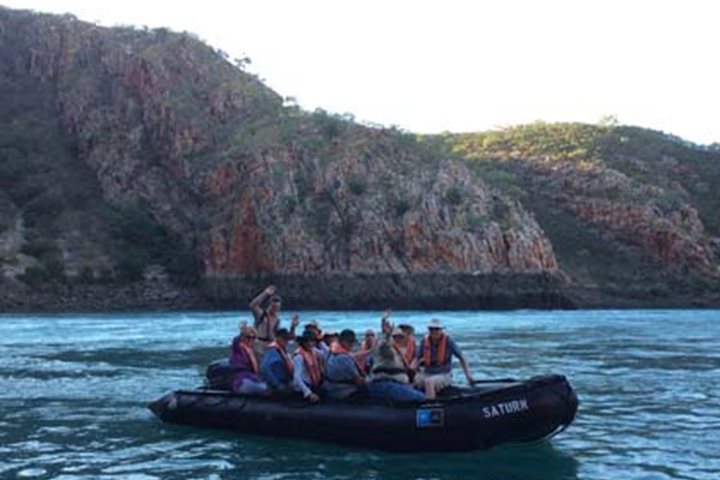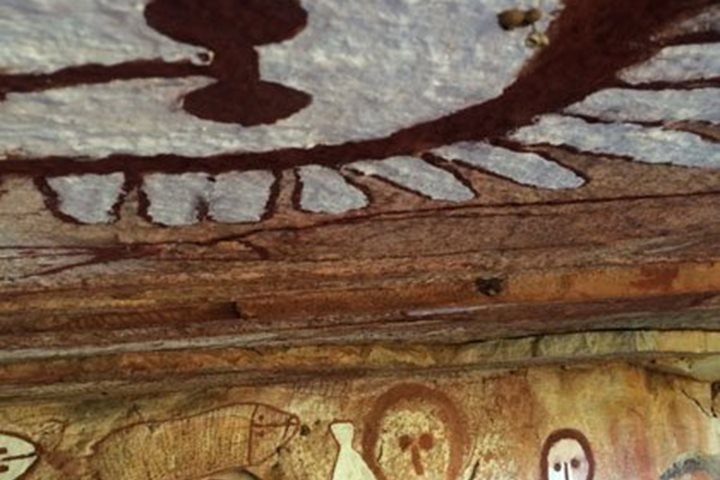Our anchorage this morning was alongside Naturalist Island in Prince Frederick Harbour. The island was named as recently as the 1980s after a team of Western Australian scientists spent several weeks on the island surveying the region’s flora and fauna. Like so many other places along the Kimberley Coast, the harbour itself was named by Phillip Parker King who visited the area in 1820 in honour of the Duke of Cambridge. Among Australia’s most spectacular waterways, the harbour is lined by towering sandstone cliffs which are punctuated in places by intrusions of Carson Volcanics – a type of basalt that is just as old as the overlying sandstone, some 1.8 billion years old.
One of Philip Parker King’s priorities when in this area was to replenish his fresh water supplies, which he was able to do at a spring up the Hunter River (named after his ship’s doctor). Our morning expedition today was to follow in the wake of King up the Hunter River and into Porosus Creek – a creek named after one of the area’s more common residents - the saltwater crocodile (Crocodylus porosus). And there was certainly no shortage of these impressive reptiles as we cruised around the area.
Prince Frederick Harbour is in the highest rainfall region in the Kimberley, it is not surprising then that the area has some of the largest areas of monsoon rainforest in Western Australia. These rainforest patches are home to several endemic species such as the Rough-scaled Python and a number of mammals that have disappeared from other parts of Australia, including the golden bandicoot and golden-backed tree rat. As we toured the area, we sighted a variety of birds including brahminy kites, kingfishers, egrets, and several types of honeyeaters and other birds. While on the exposed mudbanks, mudskippers and fiddler crabs could be seen making the most of the low tide.
Our afternoon excursion today was to the northeastern part of the harbour. The area here is ideal habitat for the osprey with several pairs having active nests in the area. Our target destination this afternoon though was a geological feature – the impressive ‘Thor’s Hammer’ – a large sandstone boulder balanced precariously on top of a large column reminiscent of a large hammer pointing to the sky.
Back onboard the National Geographic Orion we were treated to a spectacular sunset as the colourful red and orange hues of the surrounding cliffs lit up and another beautiful day in the Kimberley came to a close.







